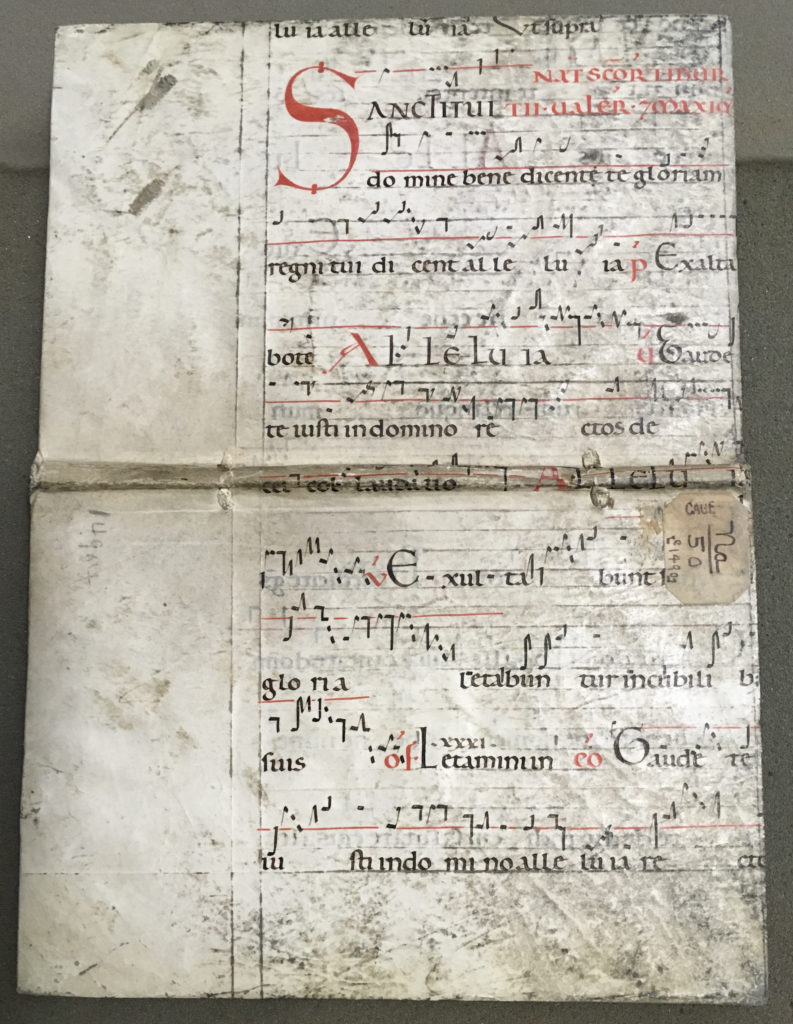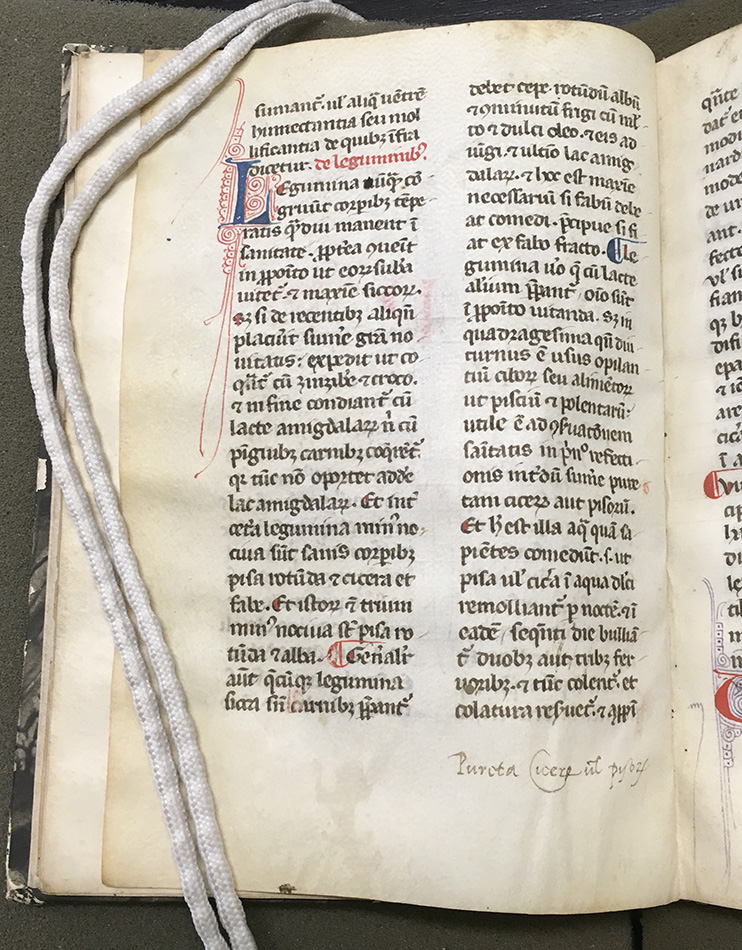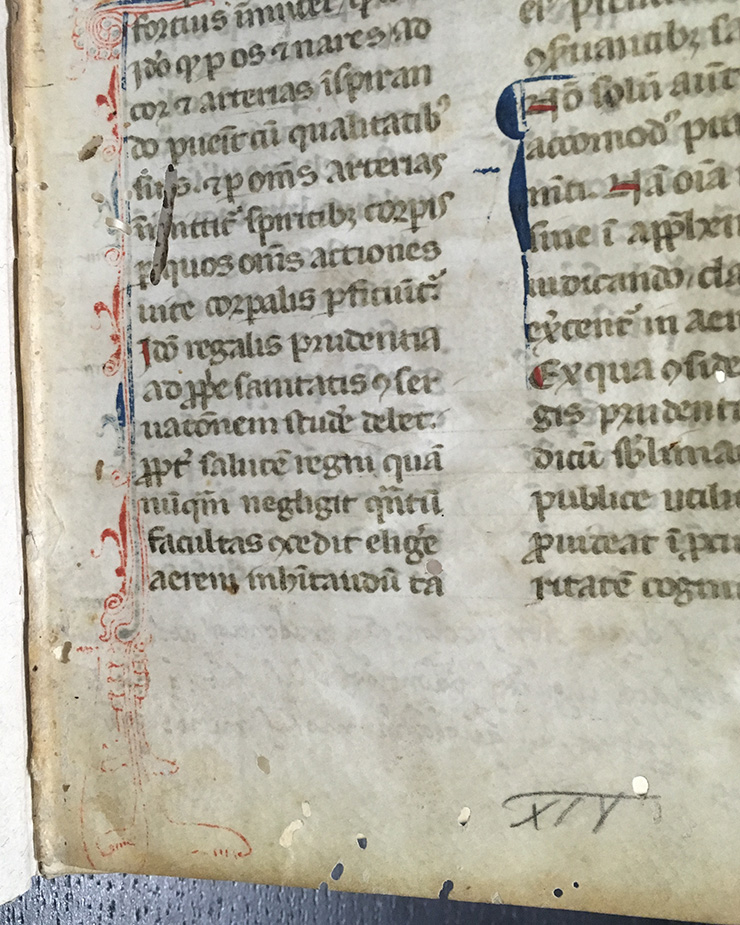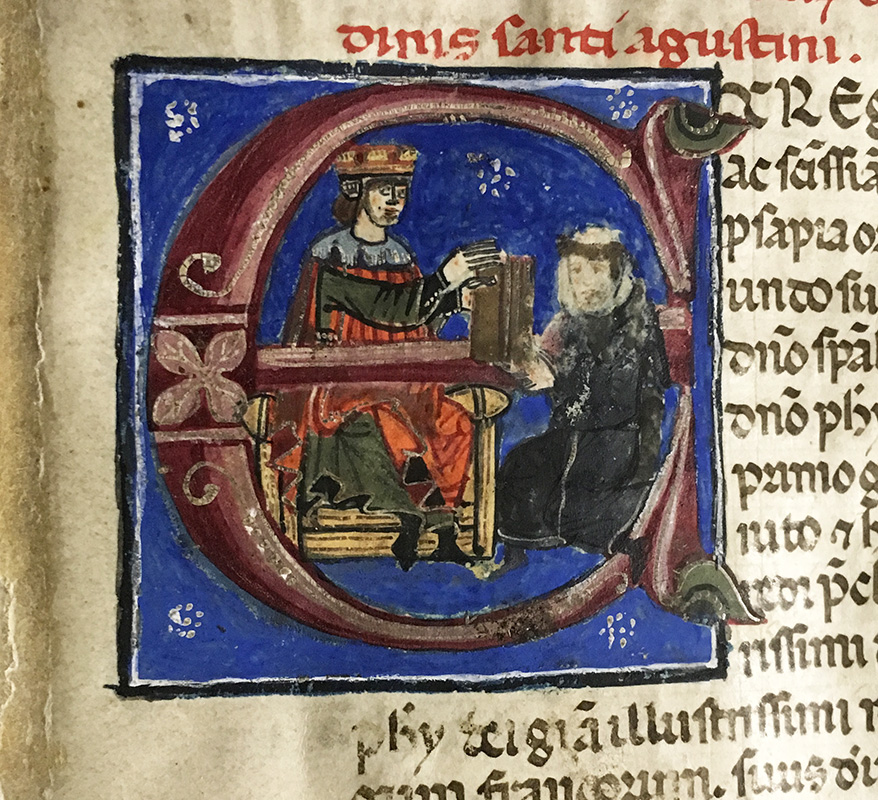The College holds just 10 medieval manuscripts (or those created before 1500), and we’ve explored many features of ALL of them over the past 10 months. In the next few weeks, I’ll be showing off some of our incunabula (books printed before 1500) that were bound in manuscript waste. Yes, not only were ‘old’ manuscripts used as binding support material (see this earlier post), but they were also used as covers.
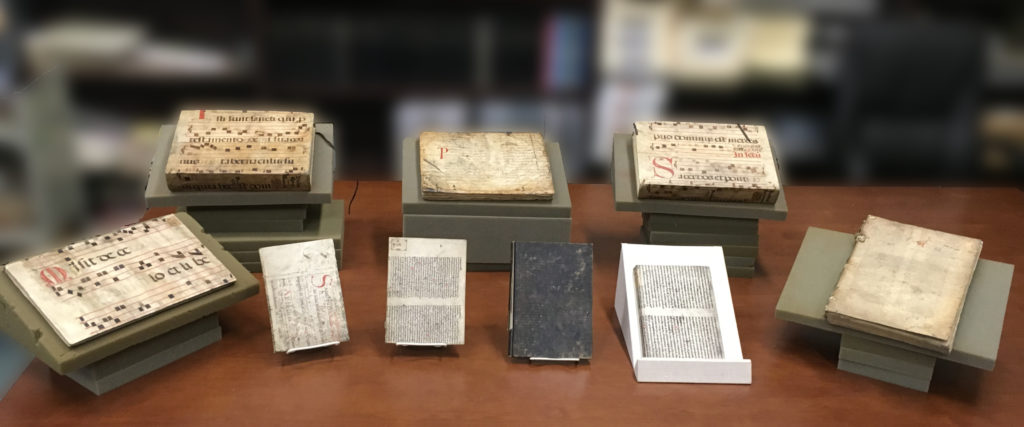
It was common practice for early bookbinders to cut up and use pages from outdated or unwanted manuscripts as binding material. This practice lasted until the 17th century, when unwanted manuscripts became more difficult to find.
The College holds at least 4 incunabula bound in music manuscripts, and several others bound in text manuscripts. The next few weeks we’ll be looking at some of them.
